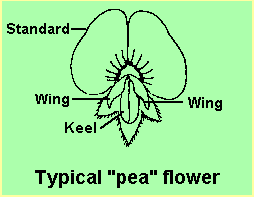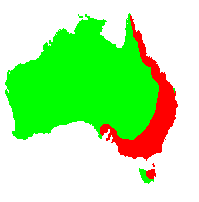General Description:
Glycine is a genus of about 25 species, most of which are found only in Australia but several species occur in East Asia and the Pacific islands. The best known species is the soybean (Glycine max) which is native to East Asia. Glycine species usually have a twining or scrambling habit.
Glycine clandestina is usually a wiry, twining plant whose thin stems twist around the stems of other plants. Its habit is inconspicuous and it is often not noticed until the flowers appear. It is not especially vigorous and does not overwhelm other plants. The leaves are arranged alternately on the stems and are 3-foliolate with the middle leaflet usually longer in length than the other two. The leaflets are linear to lanceolate in shape and up to 40mm long by 10mm wide.

The flowers, which appear in winter and spring, are usually mauve to pale pink and white. They are the typical “pea” shape consisting of 4 petals; the “standard”, the “keel” and two “wings” as shown in the accompanying diagram. The flowers are followed by elongated pods up to 40 mm long.
Twining Glycine is rarely cultivated but, given its wide natural range, it should be adaptable to most soils and aspects. The plant has limited horticultural potential and is rarely available even from specialist native plant nurseries.
Propagation is easy from seed following pre-treatment to break the physical dormancy provided by the impervious seed coat. Pre-treatment can be carried out by abrasion or by the use of boiling water (further details can be found in under the “Propagation” tab of the “Pea Family” page). Cuttings could be expected to strike well using firm, current season’s growth.

Glycine clandestina
Photo: Brian Walters
 Australian Native Plants Society (Australia)
Australian Native Plants Society (Australia)